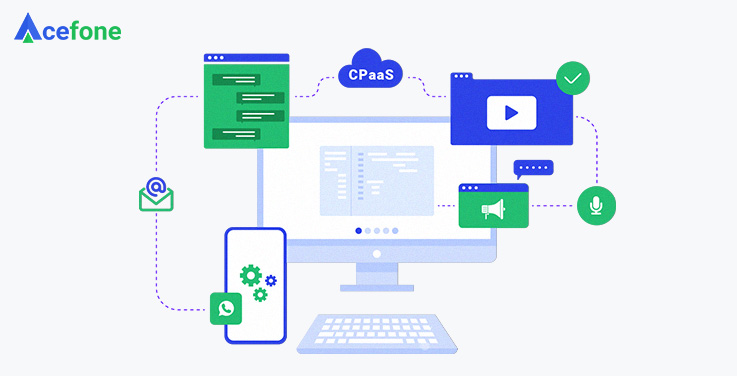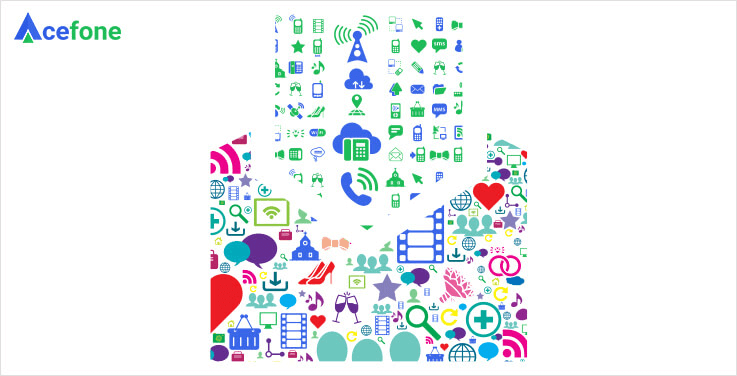Video conferencing is an online communication technology that has taken the business world by storm.
In fact, video conferencing has become the new phone call. It is no longer an optional innovation and is quickly becoming an essential business tool for communication.
Whether it is engaging remote employees, collaborating across different departments or clients in different cities, video calls make it all look too easy. Communication has become more efficient, and simple tasks like office meetings, job interviews, and managing suppliers can be done via technology.
According to research, 76% of employees use video communication for remote work, and the global video conferencing market is expected to grow at an astounding CAGR of 22.5billion by 2026.
Before we delve into the benefits of video conferencing, let’s try and understand what video conferencing is and why it’s an essential tool for business communication.
What is Video Conferencing?
Video conferencing or video telephony is the visual communication between two or more people featuring audio and video transmission in real-time, irrespective of location.
In simpler terms, video conferencing software allows communication between two or more people remotely. Initially, the software only enabled users to make video calls or group video conferences. As the technology has evolved, the software acquired many valuable tools and features for remote communication and learning.
Today video conferencing tools are integrated into video collaboration and unified communications platforms that offer features like screen sharing, instant messaging, project management tools, telephony integration, recordings etc.
[av_sidebar widget_area=’recommended link shortcode’ av_uid=’av-1x5mf4′]
Videotelephony has evolved the communication landscape in the modern workplace. Some of the key benefits of video conferencing are as follows.
-
Budget-friendly
Before the COVID-19 pandemic, organisations spent a significant amount of money on business travel to meet clients, attend conferences and hold meetings with other businesses. However, video telephony software allows companies to conduct their business virtually and cut travel expenses that can be utilised for business expansion, marketing and development.
Video conferencing has helped businesses to save time, cut down on time wasted in travelling and optimise the efficiency of the employees. It eliminates the need for accommodation, meals between meetings and conference rental rooms, which would save money for organisations.
Moreover, platforms like zoom are ideal for small businesses as they offer free meetings for a limited number of users and a limited length of time.
-
Increases productivity
If you want to connect with a client, would you prefer sending an email and waiting for their response or connecting over a video call and having a virtual face-to-face conversation? Most would choose the latter option and use the screen sharing feature for interactive meetings and webinars.
Video conferencing enhances productivity by allowing employees to work remotely from anywhere. Be it coffee shops, beaches or mountains; the flexibility enables employees to maintain a work-life balance.
Video communication makes it easy for employees to collaborate in real-time and saves you from delays, misunderstanding and lost emails.
It allows everyone to have a voice, incorporate feedback and answer queries immediately, leaving little room for confusion. It is a great tool to brainstorm ideas and ensure everyone is on the same page. It also eliminates the need to travel for your employees to allot more time into their daily activities.
-
Translation for multilingual meetings
Today, most businesses have an international client base; connecting virtually to discuss business plans and strategies is the standard practice. Naturally, it brings with it the issue of a language barrier. But, the cloud has a solution.
Organisations can incorporate Microsoft teams and Skype that supports text or speech translation features. It can transcribe spoken words and translate them in real-time for everyone to hear and understand, enabling communication in multiple languages.
-
Improves communication
In audio conferencing, participants tend to zone out and have the option to multitask because they feel disengaged or disconnected from other team members.
But with video conferencing, employees have to maintain virtual eye contact which prompts an increased level of engagement and attention to detail.
When all the conference members are visible, they would be inclined to use face to face communication skills. The human brain registers images 60,000 times faster than text and audio. Therefore, visually, attendees will retain more information and comprehend it better than audio or text meets whenever you conduct a meeting.
-
Helps build relationships
The video conferencing tool helps build both personal and professional relationships.
When you meet face-to-face with someone, you can pick up verbal and non-verbal cues to build trust and emotion. However, that may not be the case in virtual communication.
Video conferencing can help you bridge the gap and make connections between your clients and employees of the company. It’s a great tool to improve workplace relationships and build camaraderie for remote workers.
Quick video meetings between managers and employees help to boost morale and work as an antidote for disconnected employees. To see people and be seen, hear and be heard, share a flow of information efficiently, video meetings allow employees to be more efficient in their work.
Read Our Page here: Cloud contact center
-
Enhances employee retention
The secret key for employee retention is a good work-life balance.
Videotelephony not only saves time but also offers more flexibility and mobility. When employees don’t have to travel long distances to meet clients, they can plan their workday more productively.
By communicating virtually on a video call, employees can collaborate and brainstorm right from the comfort of their homes. When an employee has a balanced work-life and personal life, it automatically leads to improved retention.
-
Files and screen sharing capabilities
The modern video conferencing software offers the unique ability to share content and the user’s screen with one or more attendees. Employees often require remote assistance to understand things and the screen sharing feature allows them to do so.
Employees can collaborate and work on shared documents in real-time through screen sharing to enhance their efficiency. The ability to share the entire screen and individual apps on the desktop makes it easy for participants to understand what the presenter is trying to explain.
The participants can share their inputs and ideas accordingly, which makes these sessions to be more engaging, constructive and collaborative.
Conclusion
Video conferencing is the go-to tool that allows employees to work together and have a virtual face-to-face conversation regardless of their location.
It offers an amazing set of features ranging from VoIP, screen sharing, unlimited recordings, multiple webcam capabilities etc. It allows remote collaboration between employees and clients, saves time and expenses spent on commuting. It even encourages employees to have a balanced work-life and enhances the productivity of the organisation.
At Acefone, we offer the best video conferencing capabilities along with excellent customer support. Contact us at 1888-859-0450 or drop an email at [email protected].














